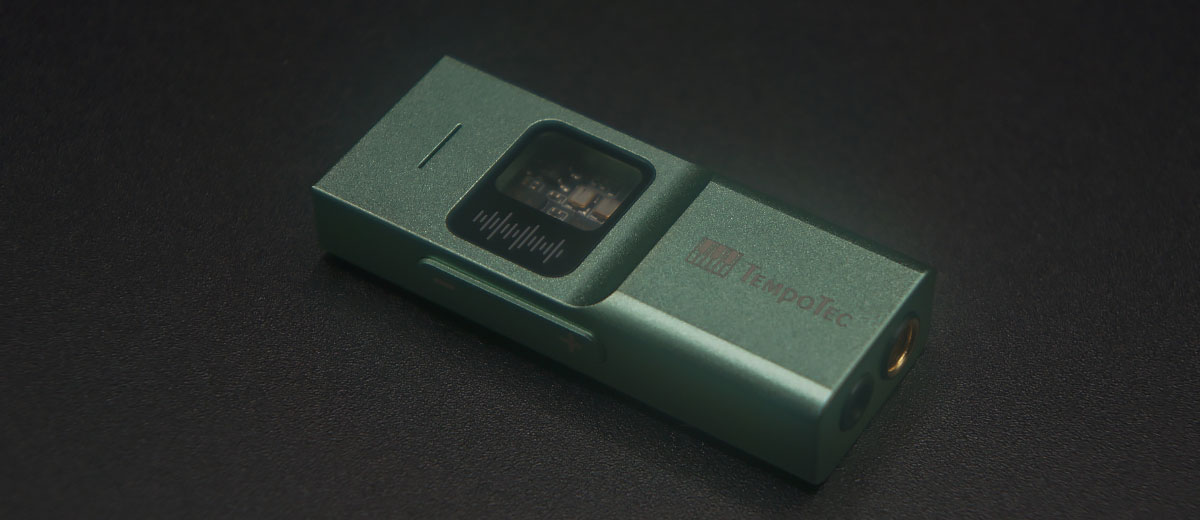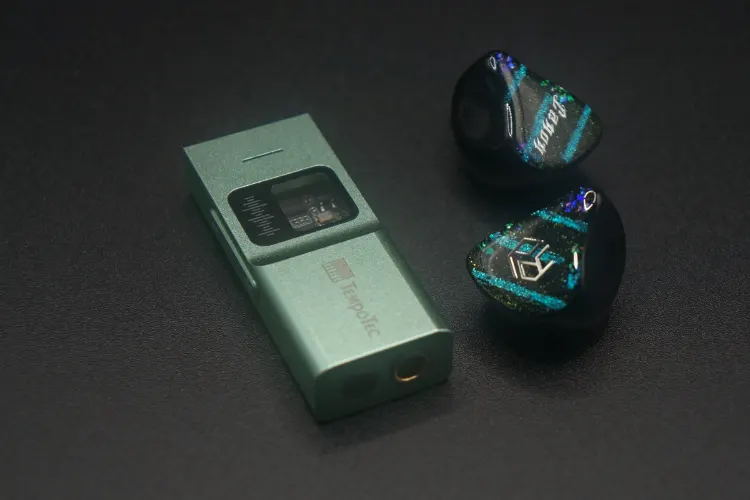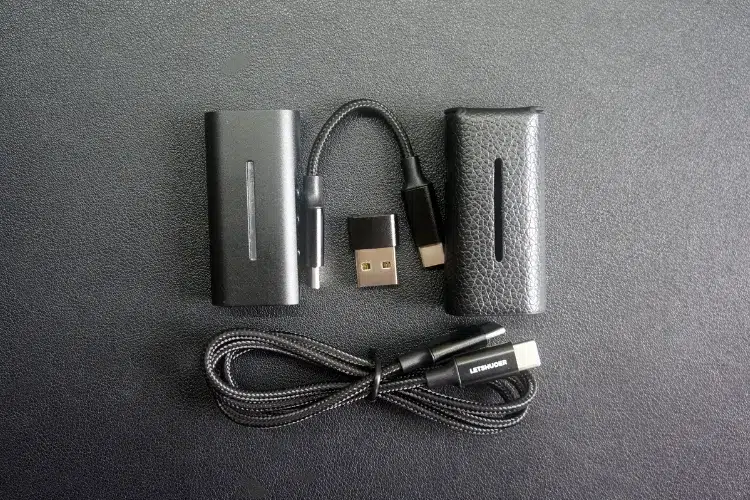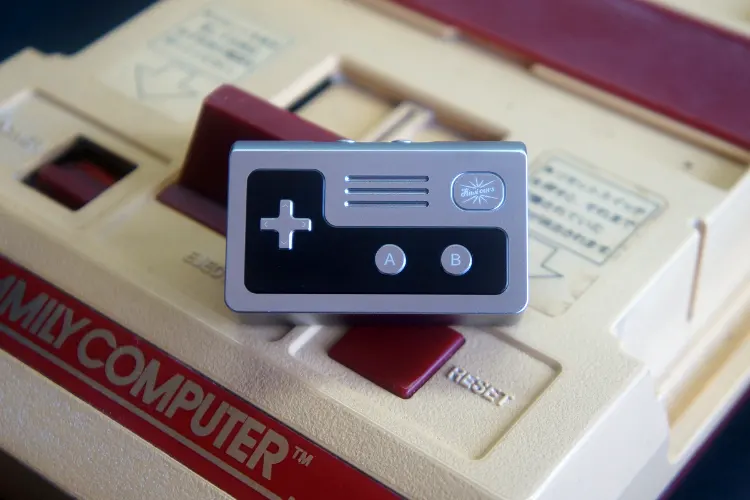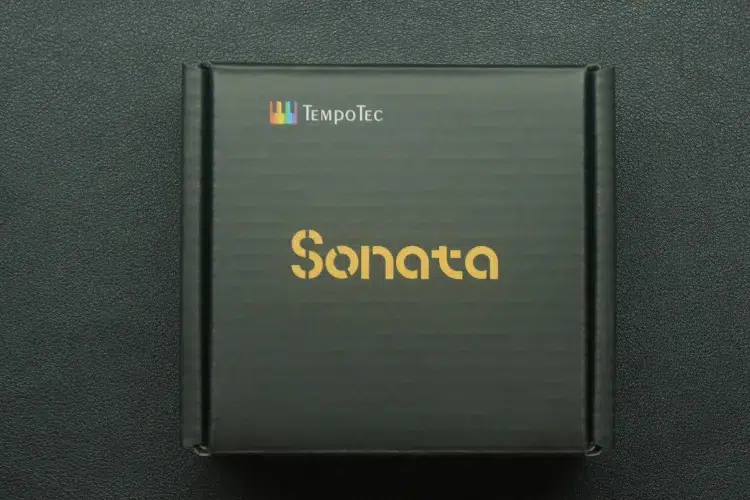Synergy
Power
The TempoTec Sonata BHD Pro has a hefty power output of up to 280mW into 32Ω via the 4.4mm balanced output and 125mW in the same load via the 3.5mm single-ended output.
Even on its single-ended output, the Sonata BHD Pro had more than enough power to drive the Yanyin Canon II and LETSHUOER S08 with a decent amount of headroom.
While I am not able to identify the exact volume level since the unit lacks a volume indicator, I can confirm that the BHD Pro was not at maximum volume.
I found that through the Canon II, moving over to the balanced output did add slightly more texture to the bass response. It did not heavily affect the tuning; it simply made each strike of kicks drums easier to identify from one another.
On more demanding IEMs like the Moondrop Blessing 3, I noticed better instrument separation and imaging when switching from the single-ended to the balanced output.
For both the Moondrop Blessing 3 and the Yanyin Cannon II, I used the Dunu Lyre Mini cable with its interchangeable 3.5mm and 4.4mm terminations to switch between the Sonata BHD Pro’s SE and balanced outputs.
Even on its balanced output, the Sonata BHD was not able to fully maximize my HD 580 Precision headphones. It was able to drive them to a listenable volume, but details in the upper treble region sounded distorted and shrill, while instruments in the mid-bass region had a blunted tonality.
Pairings
I found that the Sonata BHD Pro pairs best with IEMs that have a V or U-shaped sound signature, as it compensates for the Sonata BHD Pro’s overly lean tonality and midrange emphasis.
Among the IEMs I tried, the Sonata BHD Pro paired best with the Letshuoer S08 and Yanyin Canon II.
The S08’s warmth evens out the lean mid-bass presentation of the Sonata BHD Pro while maintaining a clean mid-rang,e excelling at reproducing female vocals.
The more V-shaped Canon II could compensate for the lacking sub-bass, giving kick drum hits more impact, however, it did not have the chest-shaking sensation I’m used to with the Canon II.
On the other hand, the Moondrop Blessing 3’s stock neutral tonality was compromised by the Sonata BHD Pro, as it diminished bass and dynamics performance too much for my taste.
Select Comparisons
FiiO BTR13
Technical
The Sonata BHD Pro uses dual Cirrus Logic CS43131 DAC Chips to decode up to PCM 32-bit/384kHz, DSD256, and MQA. The FiiO BTR13 also implements the same configuration of dual CS43131 chips, with lower decoding capabilities, maxing out at PCM 16-bit/96KHz.
Both dongles have a single female USB-C port for power and data, and 3.5mm and 4.4mm headphone outputs. Unlike the Sonata BHD Pro, the BTR13 also supports wireless connectivity, making it a more versatile unit overall.
The FiiO BTR13 can drive up to 240 mW via its 4.4mm balanced output and 120 mW via its 3.5mm SE output. The more powerful Sonata BHD Pro can power 280 mW into 32Ω via the 4.4mm balanced output and 125 mW through the 3.5mm single-ended output.
Design
The Sonata BHD Pro has a slightly smaller physical dimension with a plastic build. The Sonata BHD Pro’s CNC-machined body feels denser and more premium in the hand.
The FiiO BTR13’s larger form factor houses a 0.96-inch screen to navigate the onboard menu, while the more barebones Sonata HD Pro only has an LED indicator bar and a see-through window to show off the PCB.
Both dongles are pocketable and are easy to hold with a phone in one hand. When connected to my phone via the included USB-C cables, both stayed firmly attached despite my on-the-go usage.
The FiiO’s integrated clip makes it easier to attach to a bag strap or a belt, but because of the Sonata BHD Pro’s small size, I always found myself just throwing it in my pocket anyway.
Performance
The FiiO BTR13 and TempoTec Sonata BHD Pro share similar details in string instrument harmonics, but they excel in different areas.
The BTR13 leans toward a stronger sub-bass presence, delivering more emphasis and texture in low frequencies, which can add depth to bass-heavy tracks.
Vocals are well-layered and emphasized on both devices, though the Sonata BHD Pro offers a smoother, more natural vocal presentation that some listeners may find more appealing.
The BTR13 also stands out with a wider field and superior dynamics, giving a more spacious feel to complex arrangements.
Its treble is also more restrained, making it suitable for those who prefer a laid-back high-end response. The Sonata BHD Pro’s treble presentation is more energetic, giving the overall sound a stronger sense of air and shimmer.
Letshuoer DT03
Technical
The DT03 and the Sonata BHD Pro make use of different DAC configurations. The DT03 uses dual Sabre ES9219C DAC chips, while the Sonata BHD Pro opts for a dual Cirrus Logic CS43131 DAC implementation.
Both dongles can decode up to PCM 32BIT/384kHz and DSD files up to DSD256, however, only the BHD Pro supports native MQA Unfolding.
Both units share the same input and output options: a single USB-C input for power and data, a 3.5mm jack for SE audio output, and a 4.4mm jack for balanced audio output.
The DT03 can output up to 195mW@32Ω through its balanced output and 78mW@32Ω through its SE output. The Sonata drives up to 280mW into 32Ω via its balanced output and 125mW into 32Ω through the 3.5mm single-ended output.
Design
Both units are quite similar in size, with the Sonata BHD Pro using a more angular body compared to the chamfered curves and fillets of the DT03’s black anodized shell. The more curved body of the DT03 makes it easier to hold in the hand, the BHD Pro is by no means uncomfortable.
The DT03 has a diffused LED strip spanning the length of the dongle, shining different colors depending on the source file. The Sonata BHD Pro has a much smaller LED strip placed above the unit’s see-through window, highlighting the PCB and soldered chips.
The DT03 has a portion of its shell carved out to house the high-low gain switch and the volume buttons, while the Sonata BHD Pro’s volume controls are implemented via a rocker that is slightly raised from its body.
Performance
The DT03 has a slightly better dynamic range and a wider soundstage, creating a more holographic soundscape that excels in more. complex tracks. Its guitar and vocal tones have a lush, atmospheric quality, though they sometimes sound peaky, particularly in specific high notes.
In terms of bass performance, both units are on par, offering solid depth without overpowering other frequencies.
Treble presentation on the DT03 sits between the Sonata BHD Pro and BTR13. It is a bit more pronounced than on the BTR13 but less forward than on the Sonata BHD Pro, giving a touch of sparkle without pushing too much energy.
Both devices similarly emphasize vocals, though the BHD Pro tends to deliver a slightly smoother, more natural vocal presentation.
Kiwi Ears Allegro
Technical
The ES9028Q2M DAC-equipped Allegro differs from the dual CS43131 DAC configuration implemented by the Sonata BHD Pro.
However, both dongles have similar decoding capabilities, supporting PCM up to 32BIT/384kHz and DSD up to DSD256, with the BHD Pro edging out the Allegro with its support for up to 8X MQA unfolding.
The Allegro and Sonata BHD Pro feature a removable USB-C female jack, allowing users to swap out compatible cables. However, only the Sonata BHD Pro comes with a USB-C to Lightning cable in addition to the USB-C to USB-C cable
Both units include a 3.5mm SE jack and a 4.4mm balanced jack. The Allegro can deliver up to 155mW@32Ω and 70mW@32Ω through its balanced output, while the significantly more powerful Sonata BHD Pro can drive up to 280mW and 125mW on the same load.
Design
Both the Sonata BHD Pro and Allegro have CNC-machined aluminum shells, however, the Allegro is significantly wider, whereas the BHD Pro is longer.
Despite its see-through PCB Window, the Sonata BHD Pro looks uninspiring compared to the Allegro’s game-controller-inspired design.
Despite the Allegro’s decent ergonomics, I found the Sonata BHD Pro was more pocketable, occupying less space. The Allegro is still compact enough for portable use, however, I found myself gravitating towards the BHD Pro since it was easier to include in my everyday carry.
Performance
The Kiwi Ears Allegro has a stronger bass response than the Sonata BHD Pro, giving kick drums and 808s a more textured presentation.
However, the Allegro’s string instrument reproduction lacks some note weight compared to the Sonata BHD Pro. Vocals on the Allegro also come through with less impact, giving them a more subdued presence.
The Sonata BHD Pro, by contrast, provides a fuller vocal presentation, adding a bit more emphasis and natural tone that may better suit vocal-centric tracks.
Additionally, the Allegro’s treble is a touch more restrained than the Sonata BHD Pro’s, which might appeal to listeners seeking a relaxing sound signature.
My Verdict
The TempoTec Sonata BHD Pro is a compact, well-built portable dongle with good accessories to ensure compatibility out of the box.
With solid power output on its 3.5mm SE and 4.4mm balanced jacks, the Sonata BHD Pro is performant enough to handle budget and mid-fi IEMs.
However, I found its sound signature best complements warmer IEMs since it synergizes well with the dongle’s boost in vocals and the mid-range
The Sonata BHD Pro may not suit every listener, as its leaner tonality benefits from a good IEM pairing. But for those whose preferences align with its sound profile, it delivers decent value, versatility, and ease of use.
TempoTec Sonata BHD Pro Technical Specifications
- DAC Chips: Dual Cirrus Logic 43131 DACs
- Output(s): 3.5mm Single Ended and 4.4mm Balanced
- THD+N <0.00012%
- Output Power: 125mW @32 Ohms (SE) and 280mW@32 Ohms (BAL)

